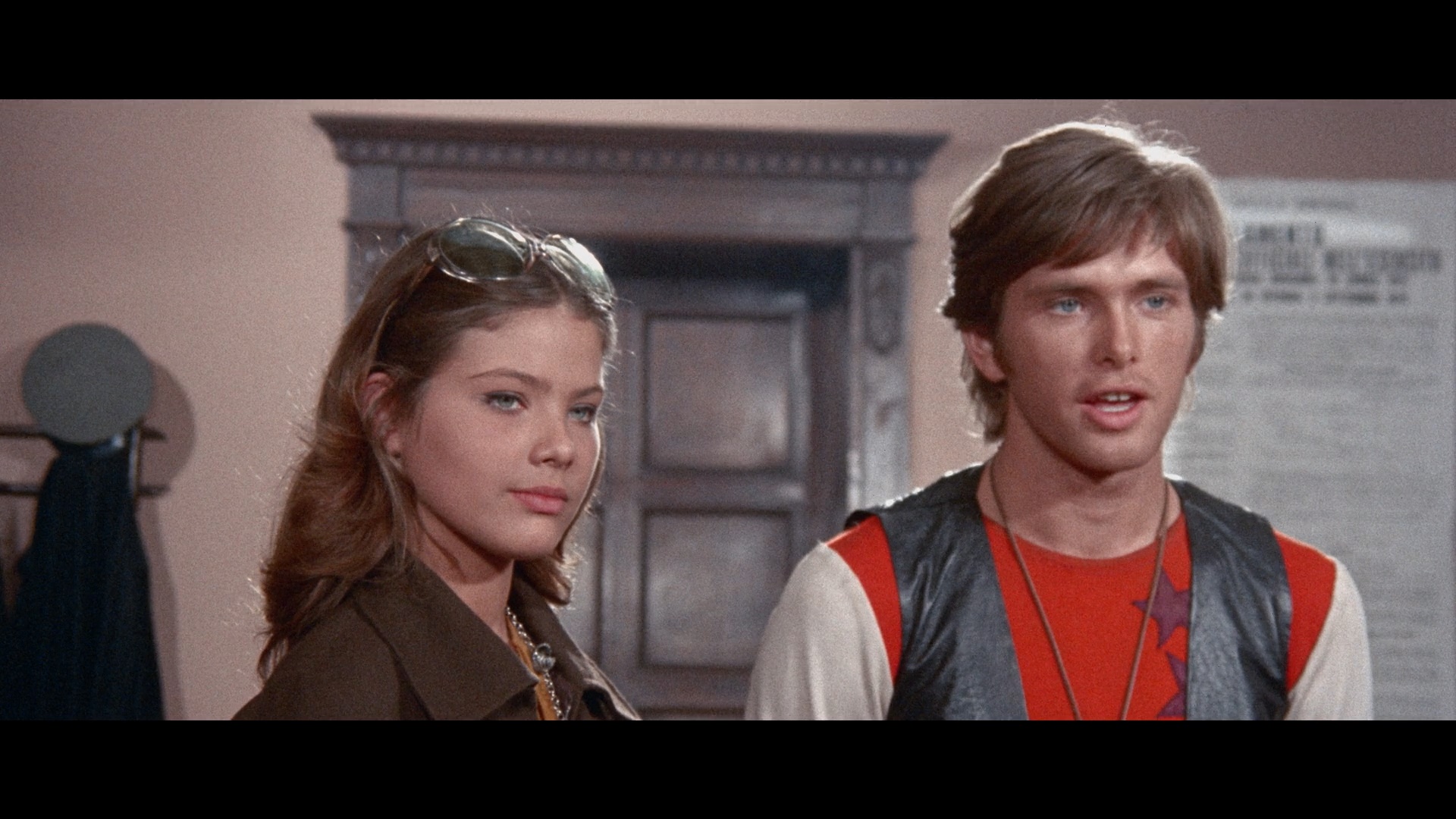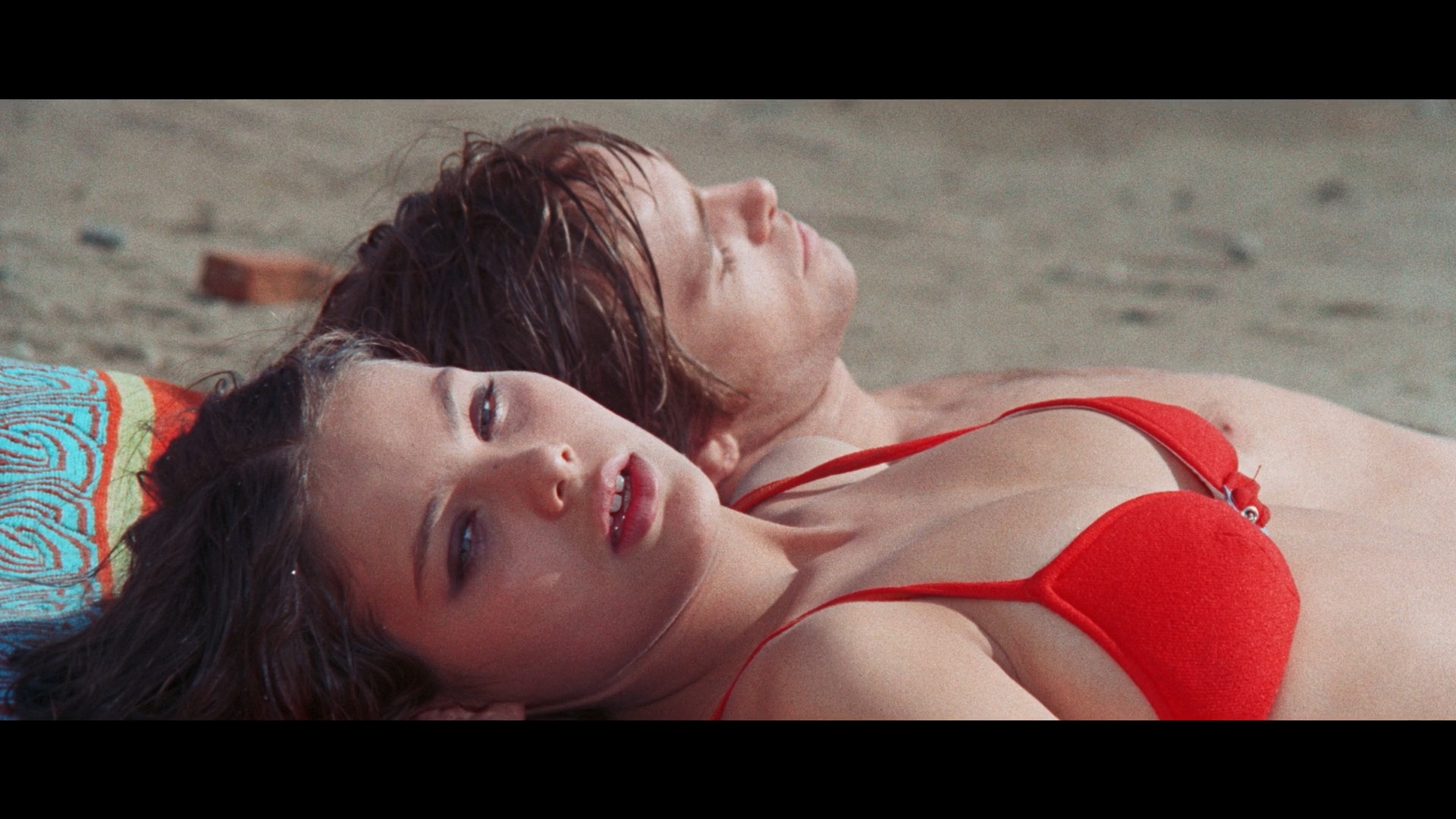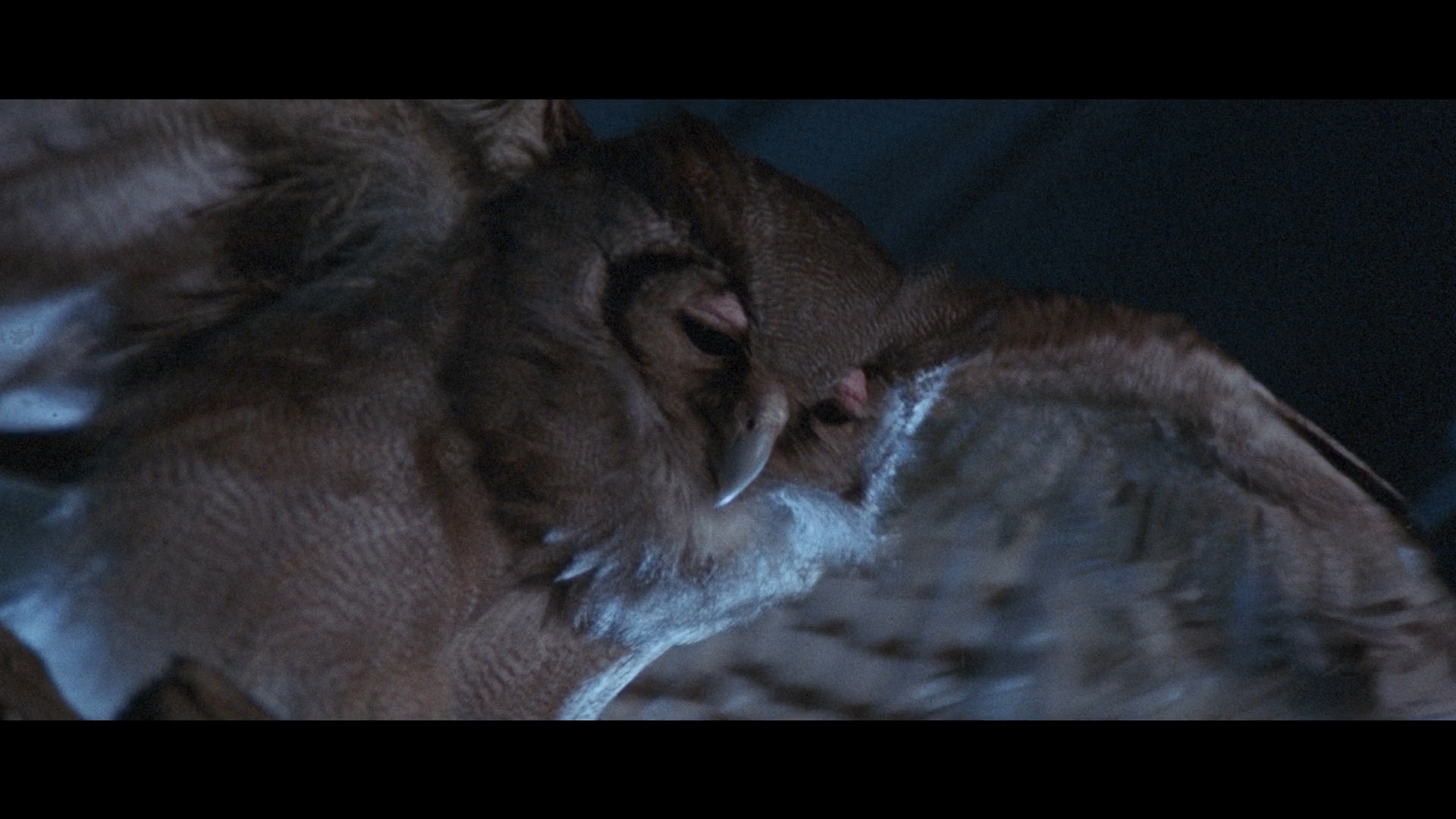



 spending a few years turning out
spending a few years turning out  a handful of classy, internationally successful gialli with Carroll Baker like Orgasmo and A Quiet Place to Kill (both also known as Paranoia in different territories), director Umberto Lenzi switched gears a bit with 1971's An Ideal Place to Kill, whose title has understandably caused it to be confused with one of his prior efforts. Also released as Oasis of Fear and Dirty Pictures, this is really only a partial giallo (the mystery doesn't fully kick in until over halfway through and there's only one bona fide murder) with the rest of the film focused on a freewheeling youth counterculture story obviously inspired by the likes of Easy Rider.
a handful of classy, internationally successful gialli with Carroll Baker like Orgasmo and A Quiet Place to Kill (both also known as Paranoia in different territories), director Umberto Lenzi switched gears a bit with 1971's An Ideal Place to Kill, whose title has understandably caused it to be confused with one of his prior efforts. Also released as Oasis of Fear and Dirty Pictures, this is really only a partial giallo (the mystery doesn't fully kick in until over halfway through and there's only one bona fide murder) with the rest of the film focused on a freewheeling youth counterculture story obviously inspired by the likes of Easy Rider.  of nasty surprises that will put audience loyalties to the test.
of nasty surprises that will put audience loyalties to the test. young home invaders, An Ideal Place to Kill has been criminally underseen over the years likely due to the strange titles it's been saddled with and the challenge of marketing a film that seems to straddle multiple subgenres. However, with the current renewed interest in the giallo it has plenty of offer including a pair of very strong performances from Lovelock and Muti, the latter using a body double (with one exception) for her more exposed moments since she was still under eighteen at the time. The sexual material isn't even remotely explicit by today's standards, but it's fun seeing the pair raiding a Copenhagen sex shop at the beginning and partaking in erotic paraphernalia that feels charmingly retro these days. The thriller moments when they arrive are a bit startling and effective, especially a jarring knife attack inside an aviary, and it all leads to one of those trademark downbeat endings that seemed to be de rigeur around that time. Adding to the enjoyment is an insidiously catchy pop score by Italian singer-songwriter Bruno Lauzi, which is still desperately in need of a full soundtrack release (with only one track ever commercially released so far). Unfortunately Lenzi was vocal over the years about the compromises he had to make with this film (mostly due to producer Carlo Ponti, who was usually known for more prestigious fare but also
young home invaders, An Ideal Place to Kill has been criminally underseen over the years likely due to the strange titles it's been saddled with and the challenge of marketing a film that seems to straddle multiple subgenres. However, with the current renewed interest in the giallo it has plenty of offer including a pair of very strong performances from Lovelock and Muti, the latter using a body double (with one exception) for her more exposed moments since she was still under eighteen at the time. The sexual material isn't even remotely explicit by today's standards, but it's fun seeing the pair raiding a Copenhagen sex shop at the beginning and partaking in erotic paraphernalia that feels charmingly retro these days. The thriller moments when they arrive are a bit startling and effective, especially a jarring knife attack inside an aviary, and it all leads to one of those trademark downbeat endings that seemed to be de rigeur around that time. Adding to the enjoyment is an insidiously catchy pop score by Italian singer-songwriter Bruno Lauzi, which is still desperately in need of a full soundtrack release (with only one track ever commercially released so far). Unfortunately Lenzi was vocal over the years about the compromises he had to make with this film (mostly due to producer Carlo Ponti, who was usually known for more prestigious fare but also  made Torso),
made Torso),  with the original idea of having the two young leads be drug smugglers before the porn contraband element was foisted on him instead. Not surprisingly, Lenzi immediately followed this up with the far more traditional giallo Seven Blood-Stained Orchids and went to helm three more noteworthy and very eccentric entries: Knife of Ice, Spasmo, and Eyeball.
with the original idea of having the two young leads be drug smugglers before the porn contraband element was foisted on him instead. Not surprisingly, Lenzi immediately followed this up with the far more traditional giallo Seven Blood-Stained Orchids and went to helm three more noteworthy and very eccentric entries: Knife of Ice, Spasmo, and Eyeball.  hoped for based on this film's past history. Completely uncut, it looks ridiculously good with nice, punchy colors (that nightclub scene in particular) and far more detail than you could even see if the few surviving theatrical prints that occasionally pop up. The
hoped for based on this film's past history. Completely uncut, it looks ridiculously good with nice, punchy colors (that nightclub scene in particular) and far more detail than you could even see if the few surviving theatrical prints that occasionally pop up. The  DTS-HD MA mono options include the full English track (which matches the vocal performances of the three leads, even if they were dubbed later) and the Italian track with optional, correctly translated English subtitles; both sound excellent. An audio commentary features yours truly and Troy Howarth chatting about the film, so that obviously can't be evaluated here but will hopefully be of value to listeners. In the Freak-o-Rama featurette "Porn Smugglers" (23m44s), the late Lenzi talks about the evolution of the film including his decision to cast Muti, his social and professional connections to Ponti, the original edict to use Baker in the role that went to Papas, and his dissatisfaction with the pornography angle of the story. Also included are the very rare original Italian trailer (with English subtitles) and four very brief "X-rated" inserts for the demands of international consumption including an alternate shot of hardcore photography and a gynecological flash of Muti's body double. A red case limited edition was also available featuring the same disc contents but also adding excellent, very informative new liner notes by Roberto Curti about the project's evolution.
DTS-HD MA mono options include the full English track (which matches the vocal performances of the three leads, even if they were dubbed later) and the Italian track with optional, correctly translated English subtitles; both sound excellent. An audio commentary features yours truly and Troy Howarth chatting about the film, so that obviously can't be evaluated here but will hopefully be of value to listeners. In the Freak-o-Rama featurette "Porn Smugglers" (23m44s), the late Lenzi talks about the evolution of the film including his decision to cast Muti, his social and professional connections to Ponti, the original edict to use Baker in the role that went to Papas, and his dissatisfaction with the pornography angle of the story. Also included are the very rare original Italian trailer (with English subtitles) and four very brief "X-rated" inserts for the demands of international consumption including an alternate shot of hardcore photography and a gynecological flash of Muti's body double. A red case limited edition was also available featuring the same disc contents but also adding excellent, very informative new liner notes by Roberto Curti about the project's evolution.
![]()